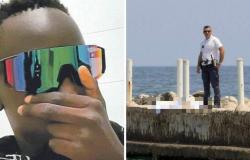Keep reading Unsubscribe from updates
There are several 1 euro coins which, due to minting errors or particular characteristics, can have a value higher than their face value, reaching considerable sums of up to 17,000 euros or more. However, it is important to underline that not all rare 1 euro coins are worth high prices.
How to determine its value?
There are basically four important factors for determining the value of one euro coins:
Rarity: The higher the mintage of a coin, the lower its value.
Storage conditions: A well-preserved coin, without scratches or defects, will have a greater value than a damaged coin.
Minting Error: Minting errors, such as double impressions, incomplete spins, or missing elements, can significantly increase the value of a coin.
Demand from collectors: The value of a rare coin also depends on the demand from collectors. If there is a lot of demand for a particular coin, its value will be higher.
Here are some examples of 1 euro coins that can have significant value
- The 2002 coin produced in Slovakia
- The 2007 coin produced in Finland
- The 2005 coin produced by Vatican City
Here is the starless coin from 2002: a precious treasure for collectors
This is a coin, minted by the Slovak Republic in 2002, which has a minting error that omitted the star in the upper part of the reverse. Its value can vary from several hundred euros to thousands of euros, depending on its condition and demand from collectors. On the obverse the coin features the portrait of Zuzana Mečiarová, the first female president of Slovakia, facing left. While on the reverse the stylized map of Europe lacks the five-dotted star at the top. At the bottom right, the minting year “2002” is written vertically. The absence of the star on the coin is due to a minting error during its production. It is estimated that only a few thousand coins with this flaw have been minted, making them extremely rare and coveted by collectors.
1 euro coin with Hercules without incuse: a precious rarity for collectors
Minted by Finland in 2007, it features a minting error that reversed the incuse of the figure of Hercules on the reverse. Its value can vary from several hundred euros to thousands of euros. On the obverse the portrait of King Juan Carlos I of Spain facing right, while on the reverse the statue of Hercules, the Greek hero, standing on a rock is depicted. The incuse, or raised edge, around the statue is absent in this error coin.
And the “Divine Grace” with smooth edge, a rare treasure for collectors
This coin, minted by the Vatican City in 2005, has a minting error that has smoothed the edge rather than featuring the classic knurling. Its value can vary from several hundred euros to thousands of euros; It is a rare and precious piece highly sought after by collectors. It is estimated that only a few thousand were minted, making it extremely rare.
The coin features the coat of arms of the Holy See on the obverse, with the keys of St. Peter and the triple tiara; above the coat of arms, the inscription “CITTÀ DEL VATICANO” is written in a semi-circle; on the reverse, however, the portrait of Pope John Paul II facing left, under the portrait, the inscription “GRAZIA DIVINA” is written in a semicircle.
The smooth edge of the coin is due to a minting error during its production. This error is what makes the coin so rare and valuable.
Keep reading Unsubscribe from updates






